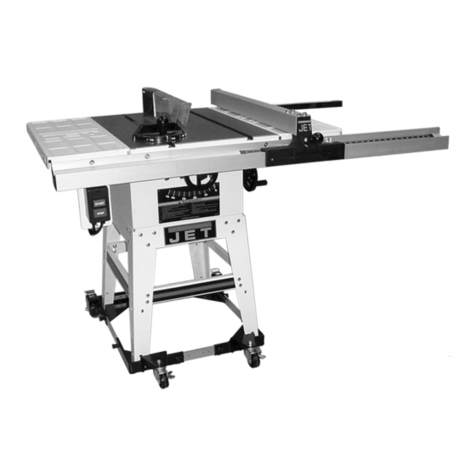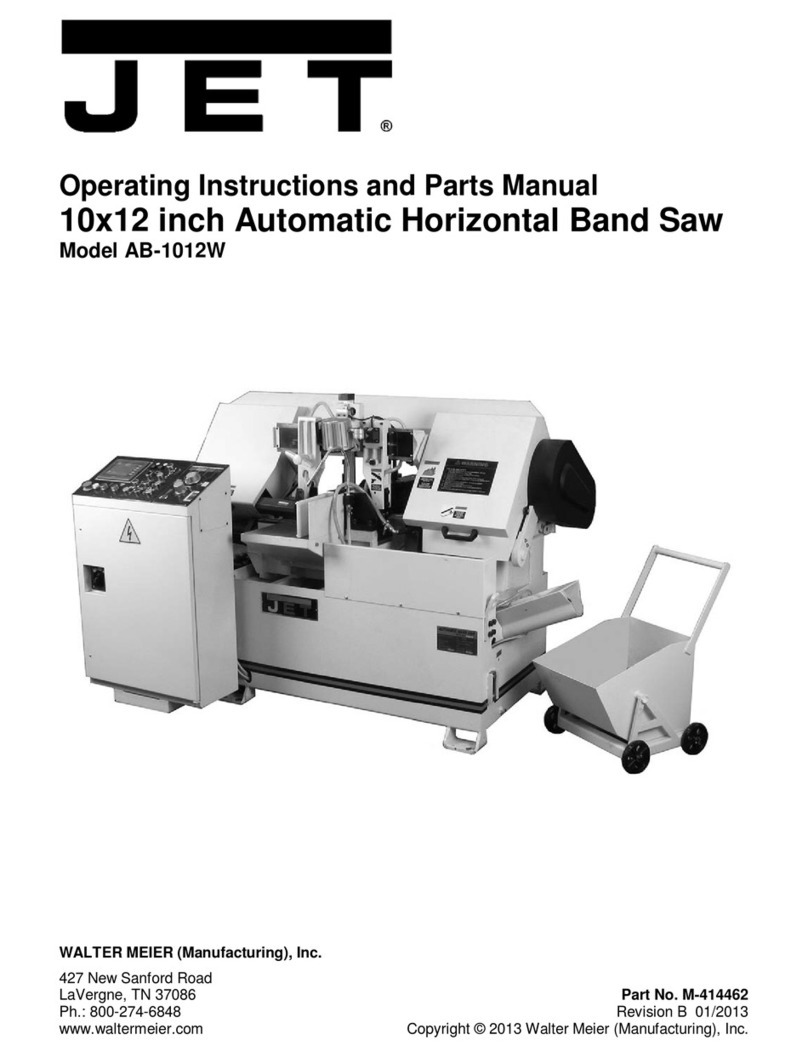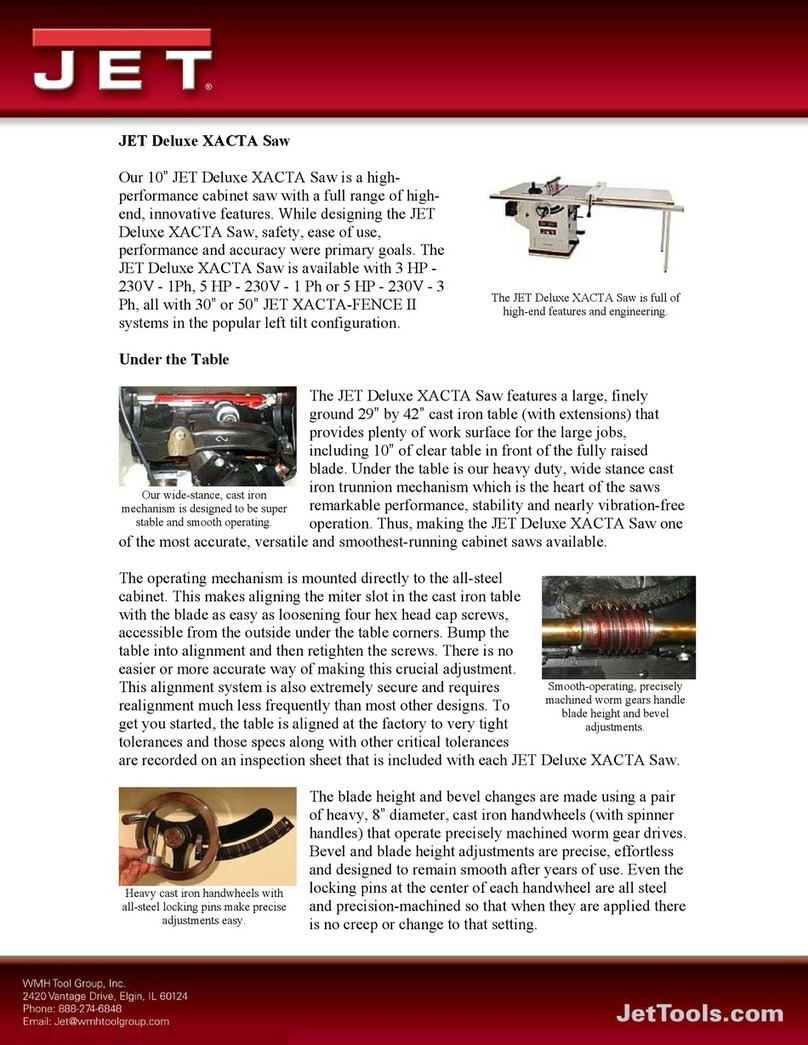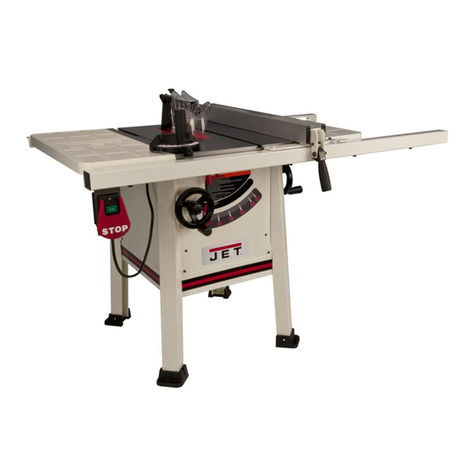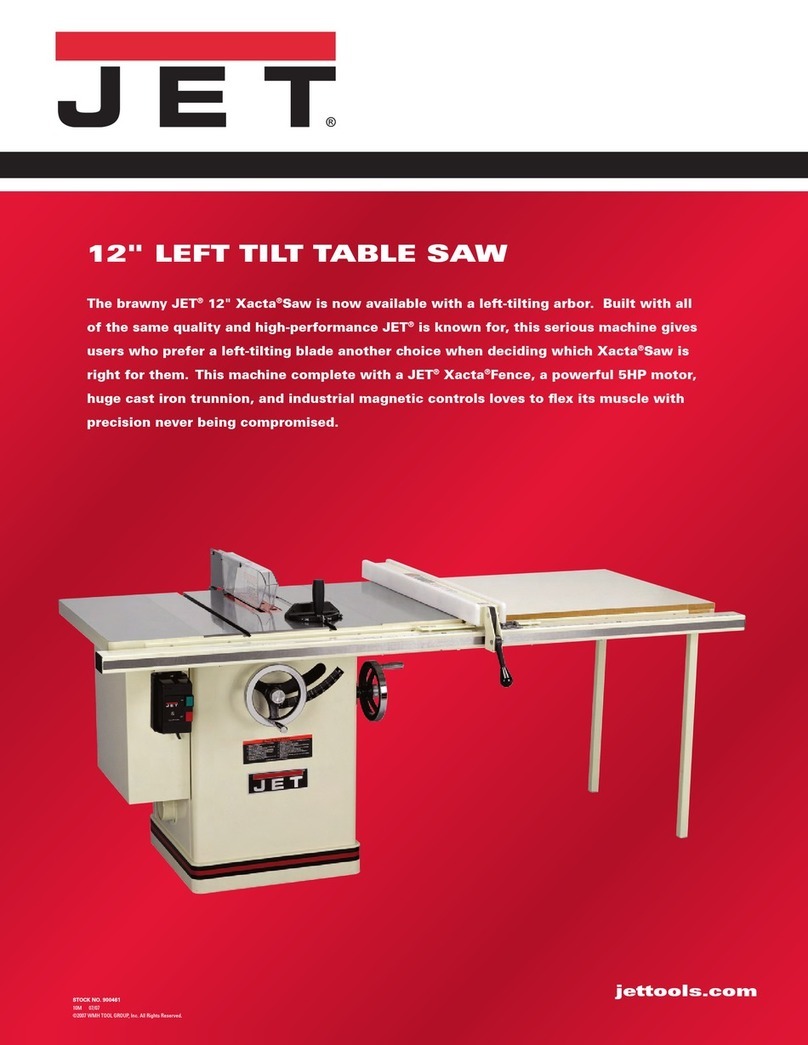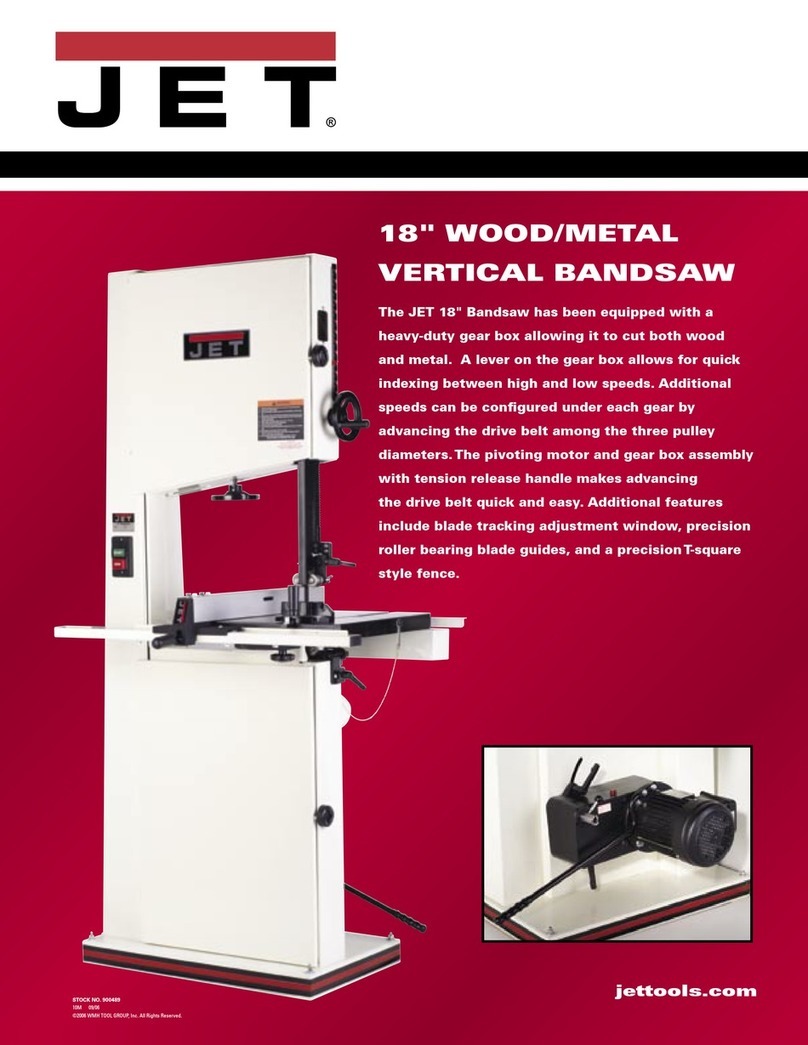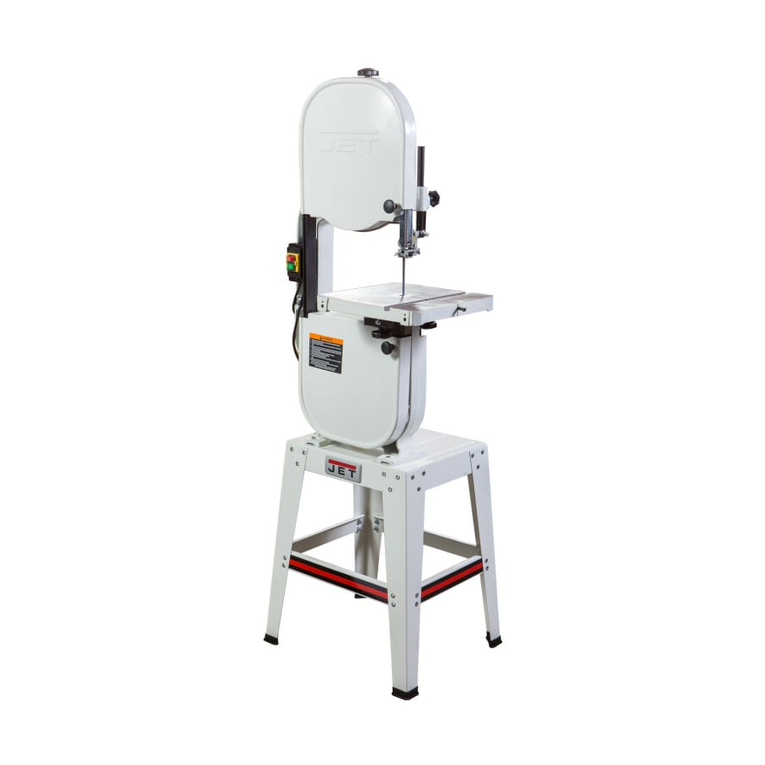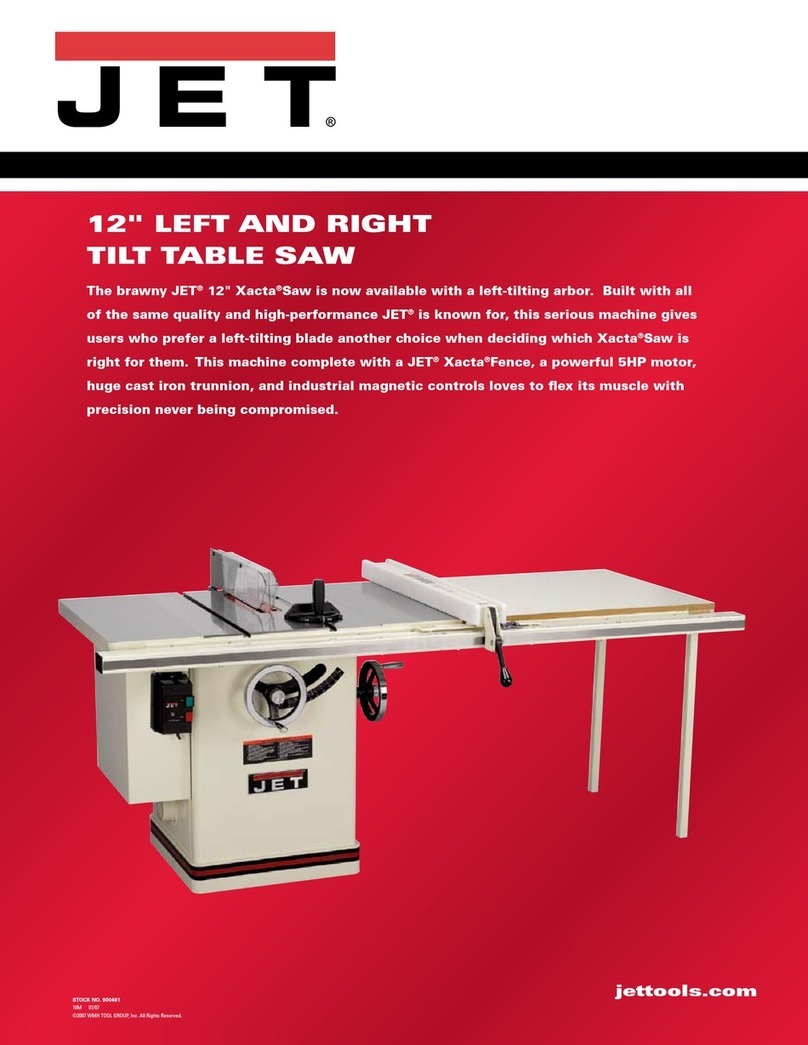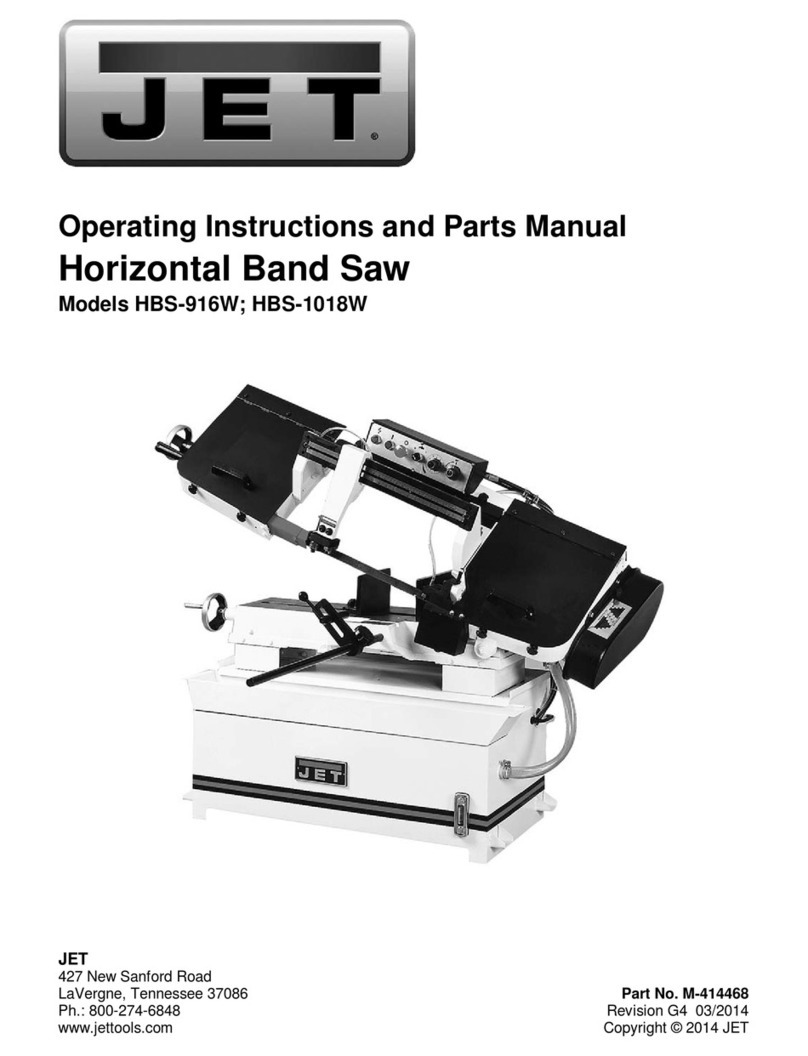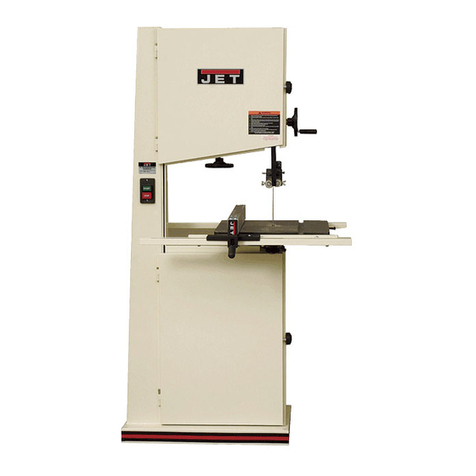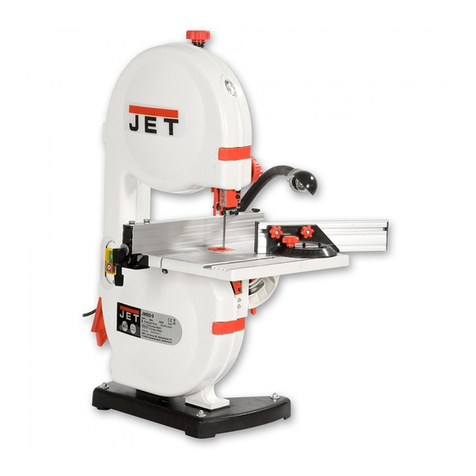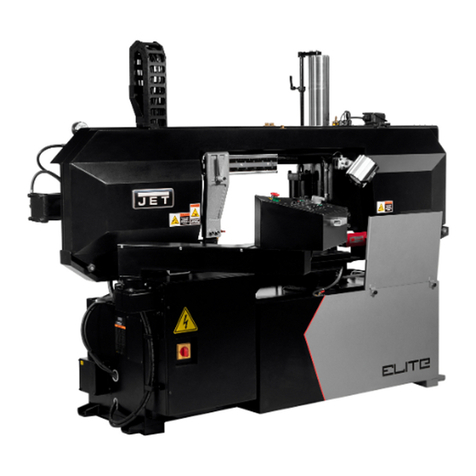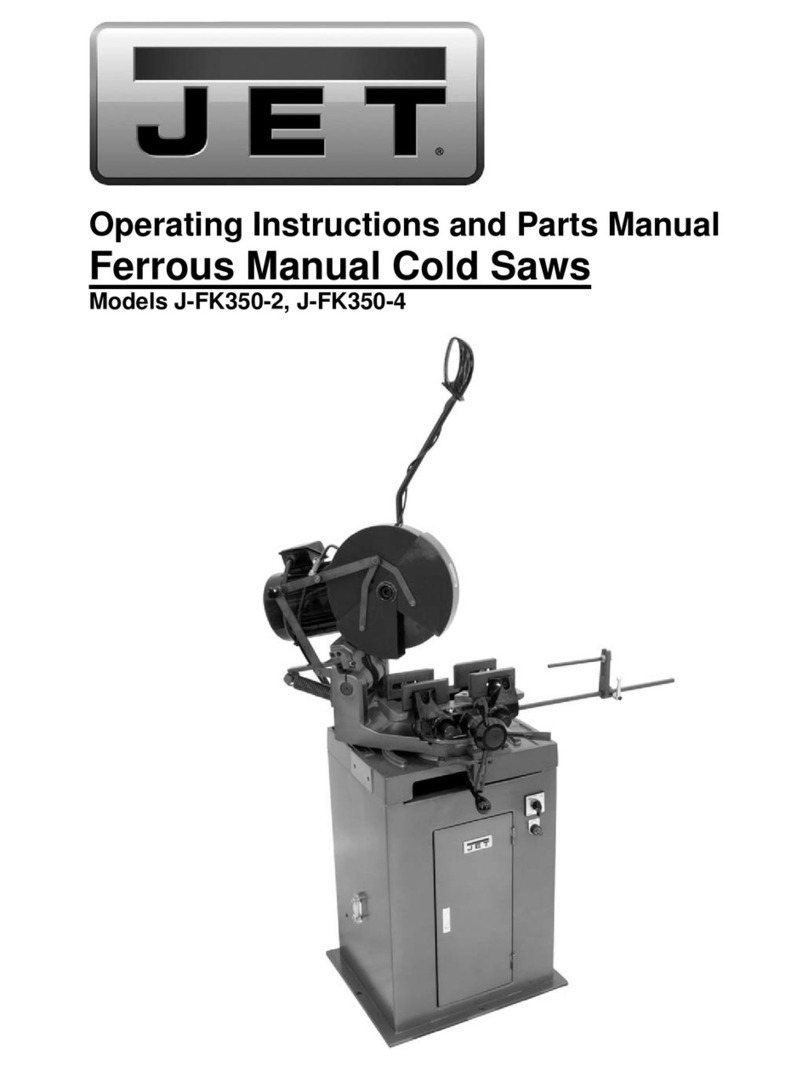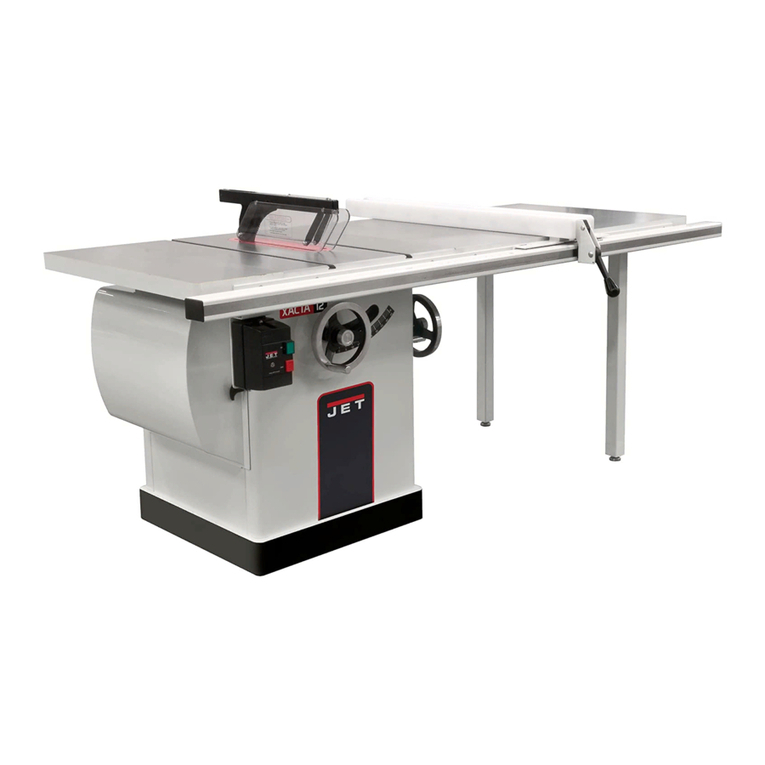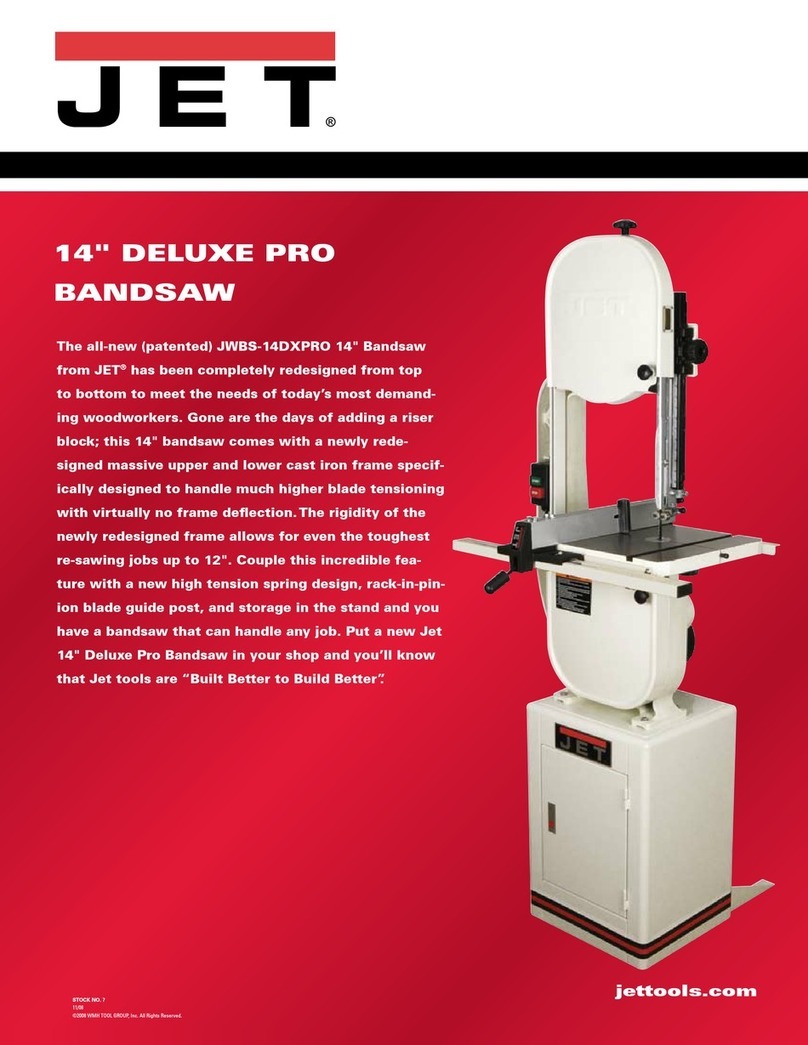
GB - ENGLISH
Operating Instructions
Dear Customer,
Many thanks for the confidence you have shown in us with the purchase of your new JET-machine. This manual has been
prepared for the owner and operators of a JET JTS-315LA table saw to promote safety during installation, operation and
maintenance procedures. Please read and understand the information contained in these operating instructions and the
accompanying documents. To obtain maximum life and efficiency from your machine, and to use the machine safely, read this
manual thoroughly and follow instructions carefully.
…Table of Contents
1. Declaration of conformity
2. Warranty
3. Safety
Authorized use
General safety notes
Remaining hazards
4. Machine specifications
Technical data
Noise emission
Contents of delivery
Description of machine
5. Transport and start up
Transport and installation
Assembly
Dust connection
Mains connection
Starting operation
6. Machine operation
7. Setup and adjustments
Changing saw blade
Mounting the raving knife
Mounting the saw guard
Rising and tilting sawblade
Rip fence setup
Adjusting 90°stop
Adjusting sawblade parallel
8. Maintenance and inspection
9. Troubleshooting
10. Environmental protection
11. “Safe operation”.........appendix A
1. Declaration of conformity
On our own responsibility we hereby
declare that this product complies
with the regulations* listed on page 2.
Designed in consideration with the
standards**. CE type examination***
performed by****.
2. Warranty
The Seller guarantees that the
supplied product is free from material
defects and manufacturing faults. This
warranty does not cover any defects
which are caused, either directly or
indirectly, by incorrect use,
carelessness, accidental damage,
repair, inadequate maintenance or
cleaning and normal wear and tear.
Guarantee and/or warranty claims
must be made within twelve months
from the date of purchase (date of
invoice). Any further claims shall be
excluded.
This warranty includes all guarantee
obligations of the Seller and replaces
all previous declarations and
agreements concerning warranties.
The warranty period is valid for eight
hours of daily use. If this is exceeded,
the warranty period shall be reduced
in proportion to the excess use, but to
no less than three months.
Returning rejected goods requires the
prior express consent of the Seller
and is at the Buyer’s risk and
expense.
Further warranty details can be found
in the General Terms and Conditions
(GTC). The GTC can be viewed at
www.jettools.com or can be
sent by post upon request.
The Seller reserves the right to make
changes to the product and
accessories at any time.
3. Safety
3.1 Authorized use
This machine is designed for sawing
wood, wood derived materials as well
as similar to be machined hard
plastics only.
Machining of other materials is not
permitted and may be carried out in
specific cases only after consulting
with the manufacturer.
No metal workpieces may be
machined.
The workpiece must allow to safely be
loaded, supported and guided.
Do not cut round stock without
suitable jigs or fixtures. The rotating
saw blade could turn the work-piece.
The proper use also includes
compliance with the operating and
maintenance instructions given in this
manual.
The machine must be operated only
by persons familiar with its operation,
maintenance and repair and who are
familiar with its hazards.
The required minimum age must be
observed
The machine must only be used in a
technically perfect condition
When working on the machine, all
safety mechanisms and covers must
be mounted.
In addition to the safety requirements
contained in this operating
instructions and your country’s
applicable regulations, you should
observe the generally recognized
technical rules concerning the
operation of woodworking machines.
Any other use exceeds authorization.
In the event of unauthorized use of
the machine, the manufacturer
renounces all liability and the
responsibility is transferred
exclusively to the operator.
3.2 General safety notes
Woodworking machines can be
dangerous if not used properly.
Therefore the appropriate general
technical rules as well as the following
notes must be observed.
Read and understand the entire
instruction manual before attempting
assembly or operation.
Keep this operating instruction close
by the machine, protected from dirt
and humidity, and pass it over to the
new owner if you part with the tool.
No changes to the machine may be
made.
Daily inspect the function and
existence of the safety appliances
before you start the machine.
Do not attempt operation in this case,
protect the machine by unplugging
the mains cord.
Remove all loose clothing and confine
long hair.
Before operating the machine,
